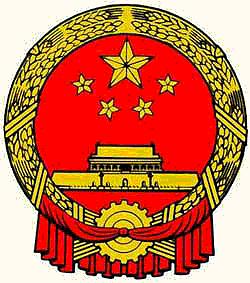Difference between revisions of "China"
| Line 16: | Line 16: | ||
* Song Dynasty (960 to 1279): Development of gunpowder and movable type printing. | * Song Dynasty (960 to 1279): Development of gunpowder and movable type printing. | ||
* Yuan Dynasty | * Yuan Dynasty | ||
* Ming Dynasty | |||
* Manchu Dynasty | |||
* Koumintang | |||
* People's Republic of China | |||
== Chinese People of Note == | == Chinese People of Note == | ||
*Sun Tzu | *Sun Tzu | ||
Revision as of 10:34, 5 March 2012
China (locally known as 中国-Zhongguo (The Middle Kingdom in Mandarin)) is an eastern Eurasian civilization. China is notable for having a major influence on surrounding civilizations in Eastern Asia and being the oldest continuous nation on Earth, existing as as a political entity in some form or another more or less consistently since 221 BCE, after being unified by Emperor Qin Shi Huangdi despite the rise and fall of various dynasties. Between 476 and 1600, Chinese civilization was the most technologically advanced civilization on earth, having developed chemical explosives, movable type printing, the compass, civil service examinations, paper and Paper Money well before european civilization did. The most recent incarnation of China is the People's Republic of China, a Communist Regieme founded by Mao Zedong in 1949 which is rising power undergoing massive economic growth.
Periods in Chinese History
- Xia Dynasty (2070 BCE to 1600 BCE)
- Shang Dynasty (1600 BCE to 1046BCE): Loose theocratic hegemony, first examples of writen chinese language
- Zhou Dynasty (1046 BCE to 475 BCE): Loose fuedal society, created concept of Mandate of Heaven. Power gradually weakened over time.
- Warring States Period (475 BCE to 221 BCE): Zhou State fails, china divided into several armed camps, emergence of Confucianism, Daoism and Legalism.
- Qin Dynasty (221 BCE to 207 BCE): China unified under the banner of Qin, Qin Shi Huangdi creates a Legalist centralized state notable for major projects, standardization of writen language, destruction of information and scholars who were against imperial ideology and brutal punishments. Fell to Rebellion but started the Dynastic Cycle.
- Han Dynasty (207 BCE to 220 CE): Long lived Dynasty, less brutal than the Qin but still centralized. Eventually adopted Confucianism as the state ideology.
- Three Kingdoms (220 to 280) Han State divides into three bodies, Shu, Wei and Wu.
- Jin Dyansty (280 to 420)
- Northern and Southern Dynasties (420 to 589) China divided between the North and South Dynasties
- Sui Dynasty (589 to 618) Introduction of the Imperial Civil service examination
- Tang Dynasty (618 to 907)
- Song Dynasty (960 to 1279): Development of gunpowder and movable type printing.
- Yuan Dynasty
- Ming Dynasty
- Manchu Dynasty
- Koumintang
- People's Republic of China
Chinese People of Note
- Sun Tzu
- Confucius
- Emperor Qin Shi Huangdi: China's first Emperor.
- Emperor Yang of Sui: Introduced the Imperial Examination system
- Mao Zedong
- Hu Jintao
- Yang Liwei: First Chinese Astronaut.
China in Science Fiction
- In Stargate, the People's Republic of China contributes to the Stargate program, including having a starship under it's control (the PLA Sun Tzu).
- In Firefly, Human Civilization has adopted a large degree of Chinese influences, notably having Chinese writing sharing an equal status with the Roman Alphabet
